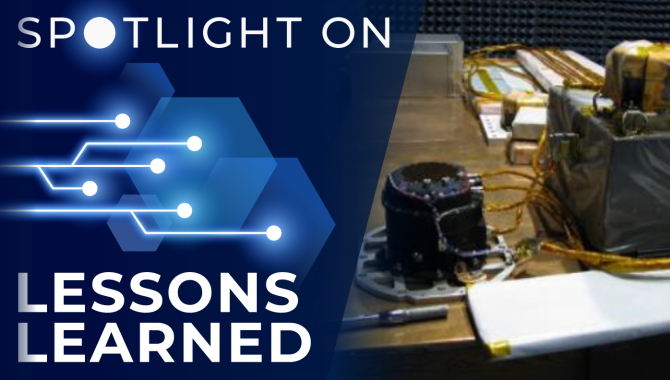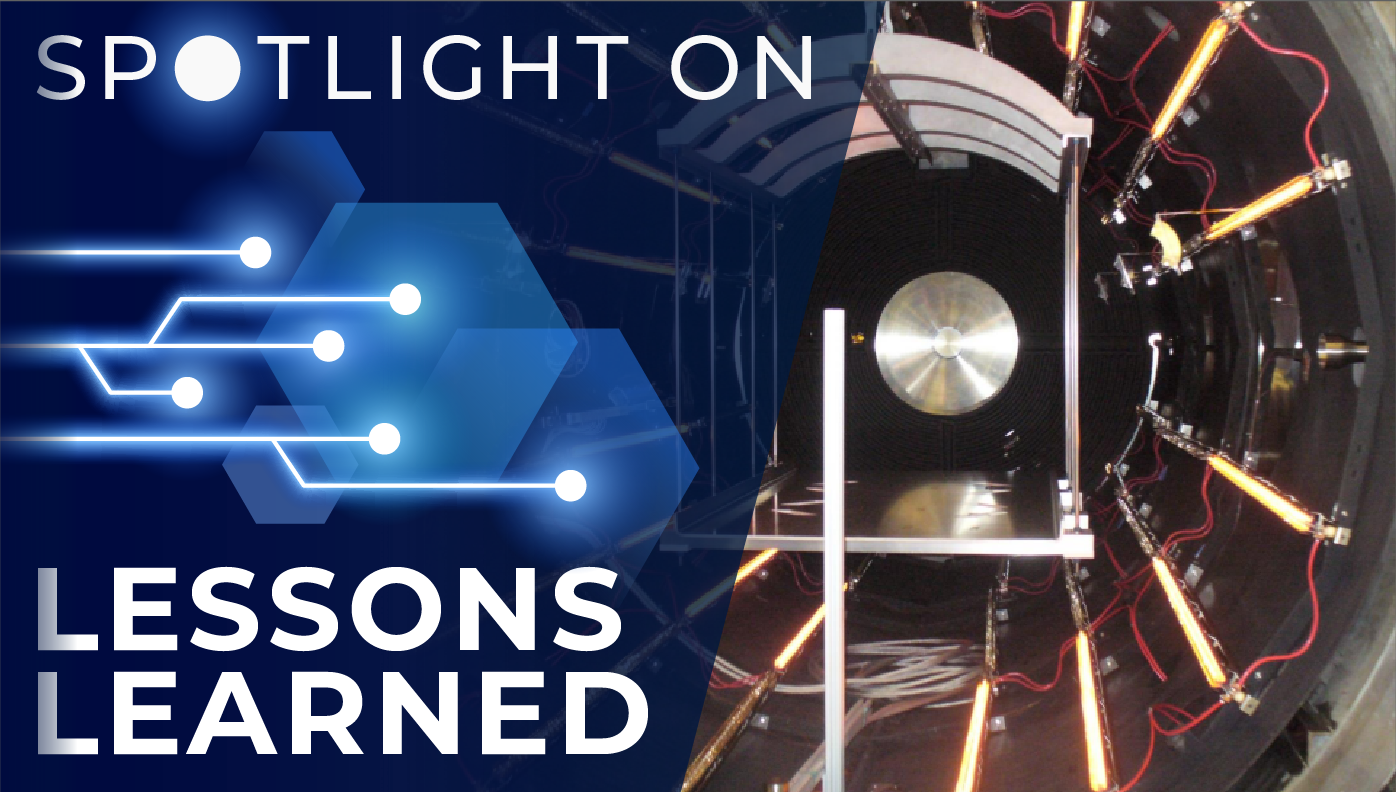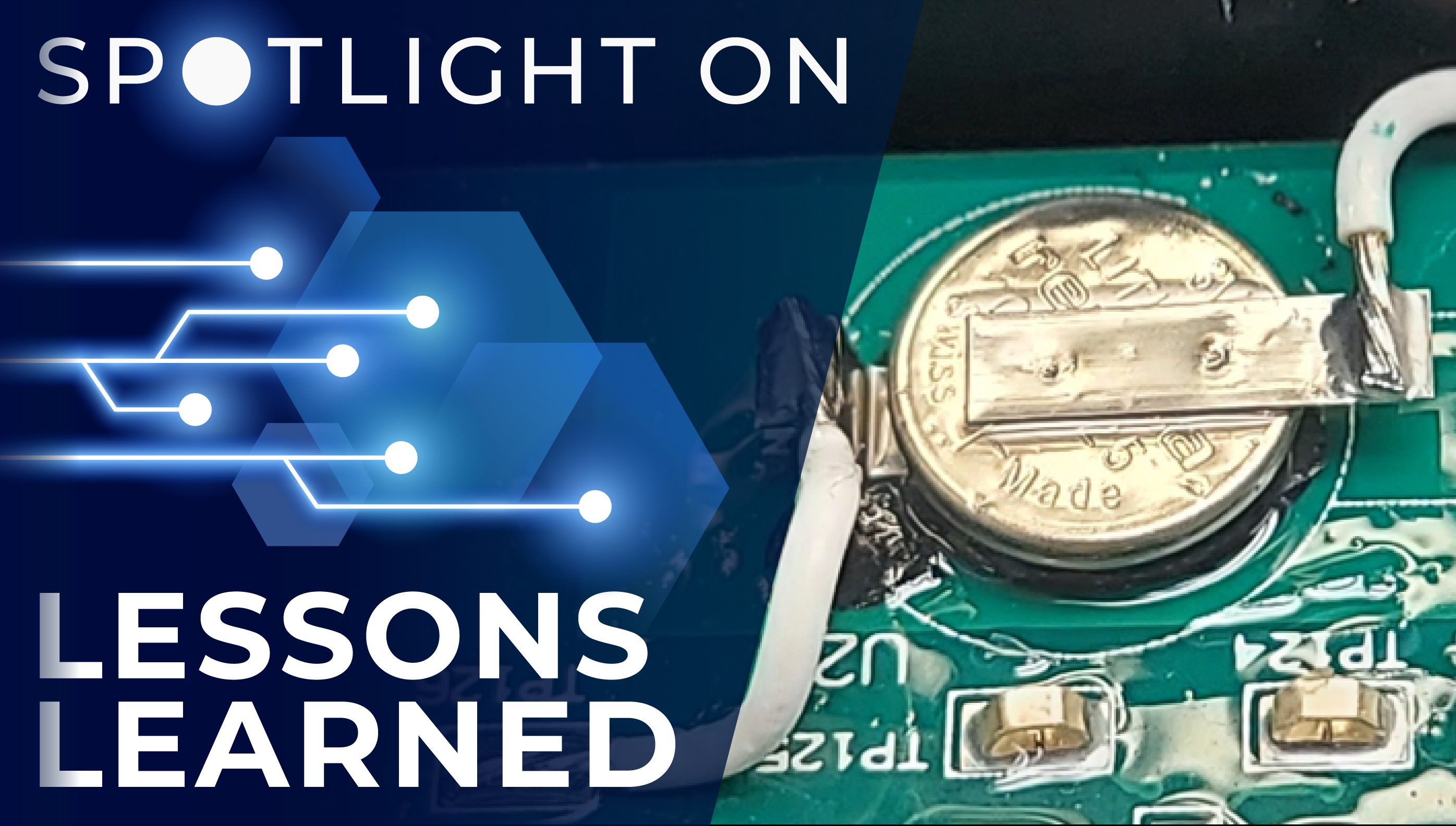
Impedance compatibility problems between test facilities and electronics hardware can result in damage or failure.
The Stratospheric and Aerosol Gas Experiment III on the International Space Station (SAGE III on ISS) Interface Adapter Module (IAM) suffered a failure at the start of Electromagnetic Interference (EMI) / Electromagnetic Compatibility (EMC) testing. The failure resulted in disassembly, troubleshooting, and reassembly of the flight hardware. Investigation revealed that an impedance compatibility problem existed between the NASA Langley Research Center testing facility and the IAM. This resulted in the supply voltage oscillating to the point of damaging the IAM.
SAGE III on the ISS, a third-generation solar occultation instrument, was launched in 2017 to study ozone in the Earth’s stratosphere. The IAM acts as the “brain” of the instrument payload, providing power and computing to the payload and acting as the interface between the instrument and the space station.
Lesson Number: 30301
Lesson Date: July 18, 2018
Submitting Organization: Langley Research Center
HIGHLIGHTS
LESSON LEARNED
- Interplay between Equipment Under Test (EUT) and a testing facility can result in unexpected system behavior that can lead to unanticipated test results and even EUT failure.
RECOMMENDATIONS
- In general, the output impedance of any power delivery system should be known and compared against the input impedance of any load to ensure the power delivery will be stable and as expected.
- For EUT of high value (either from a monetary or programmatic perspective), those responsible for the EUT should measure the input impedance and perform appropriate analyses to confirm that the entire test configuration will be stable.
- For EUT of lower value, e.g., hardware from bench-top research projects, assumptions about the lower output impedance of supplies can be successfully made, but the concept of power delivery stability, especially as electrical power designs begin to daisy-chain more DC/DC conversion, should always be remembered.
Consult the lesson learned for complete lists.

Arthur Bradley
Credit: NASA
NASA Langley Research Center Electronic Systems Branch Head Arthur Bradley on the importance of this lesson learned:
I consider the need to conduct facility impedance checks to be one of the more impactful lessons learned. When SAGE III’s hardware was first integrated into LaRC’s EMI/EMC facility, such checks were not done. As a result, when the system was powered up using an external power supply, an instability occurred that resulted in damage to SAGE III’s Interface Adapter Module.
It was subsequently discovered that an impedance incompatibility between the power supply and the facility was the cause of the instability. Through measurements and analysis, it was determined that the mismatch could be corrected using a large capacitor and resistor across the power supply lines.
In hindsight, the team recognized the importance of considering the mismatch of the output impedance of the power system to the input impedance of the facility. This was a lesson that teams at other NASA centers have also learned and is one the center discussed and documented to help prevent damage to future electronics hardware.
Spotlight on Lessons Learned is a monthly series of articles featuring a valuable lesson along with perspective from a NASA technical expert on why the lesson is important. The full lessons are publicly available in NASA’s Lessons Learned Information System (LLIS).
If you have a favorite NASA lesson learned that belongs in the spotlight, please contact us and be sure to include the LLIS Lesson Number.









